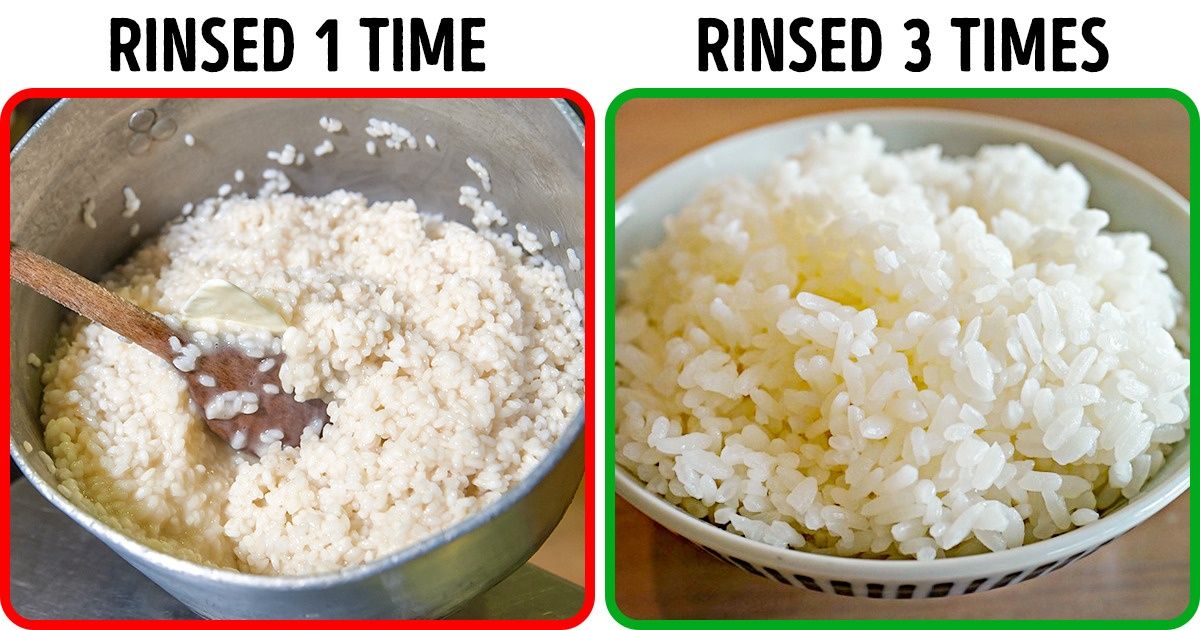My Ex Put His New Family Over Our Son, So I Served Him the Sweetest Revenge


Bright Side has collected some usual products that we all wash the wrong way.
Frozen vegetables make life easier: you just put them in the pan and boil them. But you should know that before freezing them, vegetables are washed with water. Many people don’t wash frozen products before using them, and it’s okay if you’re going to cook them at a high temperature. But if you prefer al dente vegetables, you must wash them thoroughly and cook them the same way as fresh veggies in order to get rid of dirt and bacteria.
All types of rice should be rinsed 3-4 times before cooking (especially long-grain rice.) The main danger hides not in dust but in the starch covering rice. It’s starch that causes the rice to clump together and look unappetizing. It’s also recommended to rinse other starchy grains like corn or wheat grains until the water runs clear.
You have to wash all sea products in shells thoroughly even if you buy frozen products since they can be full of sand and grit. Otherwise, you’ll be eating all that “waste.” We don’t think you like using sand as a seasoning!
It’s recommended to wash the packaging of milk, yogurt, and other liquid products before opening them. Thousands of customers touch these packs, pick them up, and read the information on the labels. As soon as we open the bottle, the bacteria from people who’ve previously handled the container can easily get inside.
You don’t have to wash raw fish unless you’re going to eat it raw. High temperatures kill all bacteria, and if you rinse raw fish, there’s the risk of spreading bacteria all around your kitchen. Keep in mind that you should wash your hands, the cutting board, and the knife after cutting.
No matter what the type of cabbage is, you have to wash it thoroughly. If you’re going to cook cauliflower, which is actually in the same family of cabbage, you need to clean all the nooks and separate it into pieces. If you want to cook red or white cabbage, you have to remove the upper 2 layers as they may hide dirt and dust. To get rid of bugs and bacteria, put your cabbage in a sink filled with water, add some vinegar, and leave for a few minutes. Then rinse the cabbage with clean water.
Canned drinks come in handy during hot summer days: a can keeps your beverage cold and makes it even tastier. But don’t gulp a can of soda without first washing it or at least wiping the top. You know that all cans usually travel in dusty trucks and people at stores always touch them. By the way, if you have an opportunity, pour the contents from the can into a glass.
All greens are extremely tasty and healthy. But when preparing lettuce, don’t forget to rinse it. To get rid of sand or dirt in the leaves, you have to tear your lettuce with your own 2 hands and leave it in clean cold water for a few minutes. Then you have to take the lettuce out, put in a colander or on a clean kitchen towel, and let it dry. Well done, you can enjoy your greens now!
The healthiest fruits are young fruits that don’t undergo any special treatment. If you want to eat an apple in winter, for example, you have to wash it. Studies show that if you soak fruits in water and baking soda for 12 minutes, the majority of the chemicals will be washed away.
Do you have your own cooking tips? Tell us in the comments!











